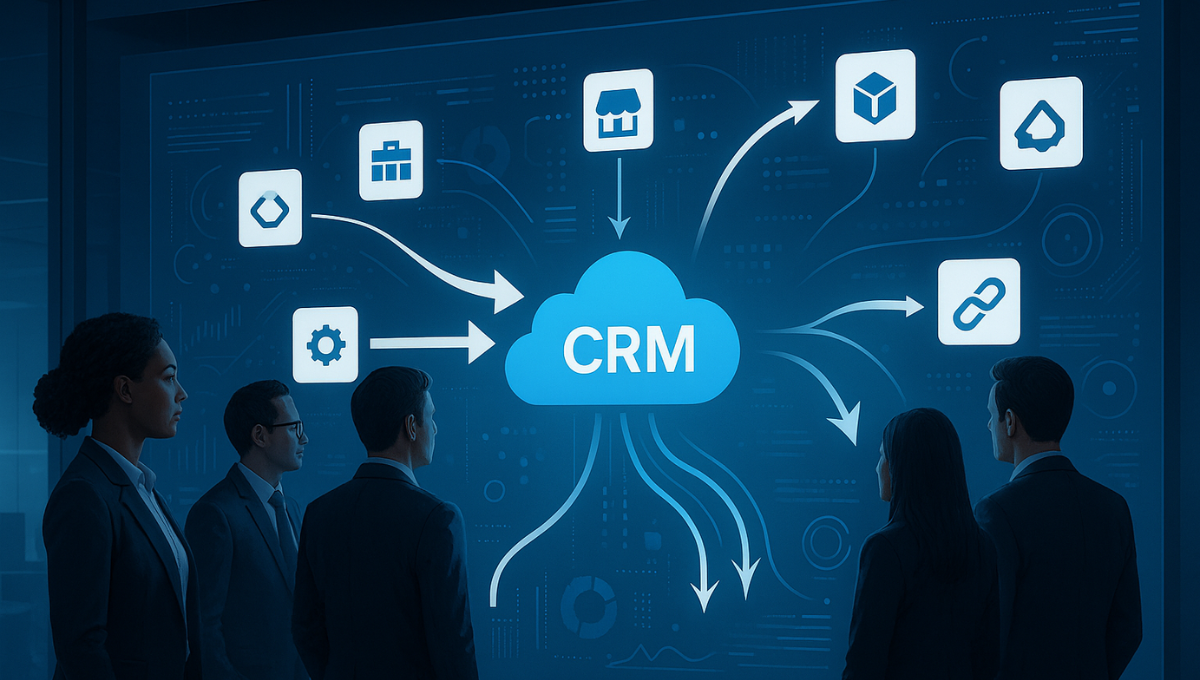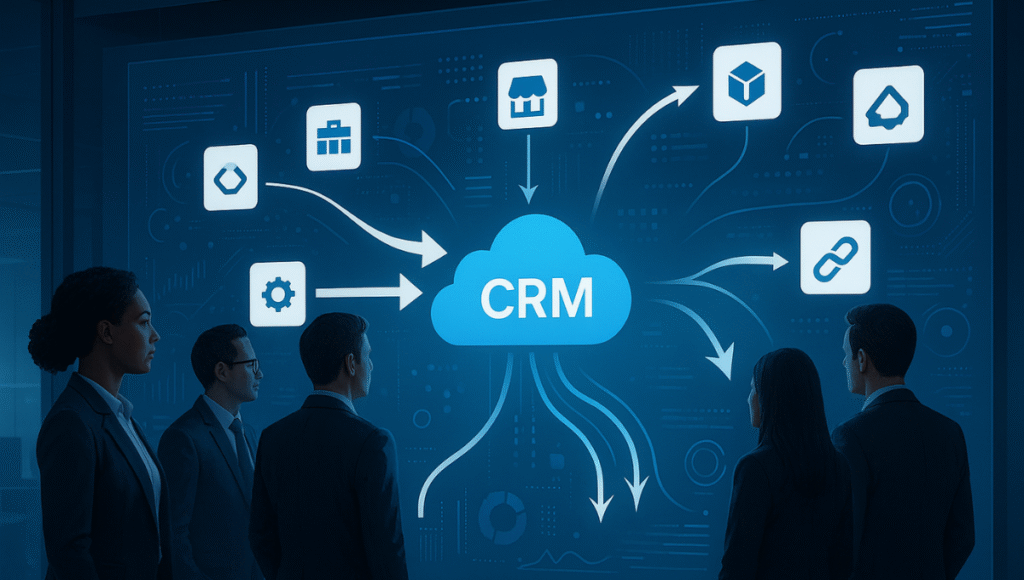
B2B marketing demands precision. You’re not just trying to catch attention; you’re building relationships that span weeks or months before a single deal closes. That’s where Salesforce Pardot, now rebranded as Marketing Cloud Account Engagement, enters the picture. This platform connects your marketing and sales teams, automates repetitive tasks, and helps you focus on prospects who are actually ready to buy.
If you’ve been wondering whether Pardot fits your business or how it compares to other marketing automation tools, this guide breaks down everything you need to know.
Salesforce Marketing Cloud Account Engagement (formerly Salesforce Pardot) is a B2B marketing automation tool with a full suite of functions that help businesses increase sales. Unlike tools designed for quick consumer transactions, Pardot focuses on longer sales cycles where multiple touchpoints matter.
Being part of the extensive Salesforce ecosystem, Pardot exists as an independent product but can be integrated with other Salesforce or third-party products. When combined with Salesforce CRM, it creates a single source of truth for your marketing and sales teams, eliminating the confusion that arises when departments work in silos.
The platform handles everything from email campaigns to landing pages, lead scoring, and ROI tracking. It’s built specifically for B2B companies that need to nurture prospects over time, not just blast out promotional emails and hope for the best.
Let’s get practical. Here’s what Pardot actually does and why these Salesforce Pardot features matter for your business.
Create and manage forms, landing pages, and call-to-actions (CTAs) with the help of drag-and-drop builders. You don’t need a developer to launch a campaign anymore. The interface lets you build professional-looking assets quickly, capture leads from multiple channels, and segment them based on where they came from or what they’re interested in.
If you’re running webinars, downloading whitepapers, or hosting events, Pardot’s forms integrate seamlessly into your existing website, collecting data that flows directly into your CRM.
Marketing teams can set up drip campaigns that trigger based on prospect behaviour. When someone downloads a guide about your product, Pardot can automatically send follow-up emails over the next few weeks, each one tailored to move them closer to a purchase decision.
The Engagement Studio feature visualises these campaigns, so you can see exactly where prospects are in your funnel and what actions they’ve taken. You’re not guessing; you’re watching the data in real time.
Here’s where things get interesting. Pardot can assign a numeric score to each inbound lead based on different parameters like the customer’s time spent on the product, email open rate, and clicks. This means your sales team isn’t wasting time on cold leads who visited your site once and never came back.
Grading goes a step further by evaluating how well a prospect matches your ideal customer profile. A high score means they’re engaged; a high grade means they’re the right fit. Together, these metrics tell your team exactly who to prioritise.
Users appreciate the seamless connection with Salesforce CRM, which allows for easy synchronisation of contacts and custom objects. When a prospect’s score hits a certain threshold, Pardot can automatically create a lead in Salesforce and assign it to the right sales rep. No manual data entry, no leads slipping through the cracks.
The bi-directional sync means updates flow both ways. If a sales rep logs a call in Salesforce, that activity appears in Pardot, giving marketers visibility into what’s happening after they hand off a lead.
Pardot’s email builder goes beyond templates. You can personalise content based on prospect data, test different subject lines, and schedule sends for when your audience is most likely to engage. The Summer ’24 update includes a feature that enables operational emails to be processed within Engagement Studio, simplifying the management of automated campaign sequences.
If someone clicks a specific link in your email, Pardot can trigger a follow-up action, like adding them to a different nurture track or alerting a sales rep. It’s all about responding to behaviour, not just broadcasting messages.
Salesforce Pardot thoroughly analyses prospects’ activities, such as when they’re most active and the progress they made between sales calls. You can track which campaigns generate the most revenue, which content resonates, and where your budget delivers the best return.
Multi-touch attribution models show you every touchpoint that contributed to a sale, not just the last click. This visibility helps you justify marketing spend and refine your strategy based on what actually works.
Pardot can be easily integrated with popular social media platforms like Facebook, Twitter, and Instagram. The integration allows you to identify where your target audience spends time, what content they prefer, and when they’re most active online. You can automate social media marketing activities while focusing on higher-value tasks.
For businesses already using tools like Slack, Zoom, or third-party analytics platforms, Pardot offers external activity tracking and API access to connect with your existing tech stack.
Features are one thing. Results are another. Here’s what happens when you put Pardot to work.
The system aligns the marketing and sales teams by allowing them to see the same shared view of customers. Marketing knows which leads are being worked, and sales can see which campaigns brought those leads in. This transparency reduces friction and creates a shared goal: converting qualified prospects into customers.
Manual follow-ups, spreadsheet updates, and repetitive email sends eat up hours every week. Lead scoring automation ranks prospects based on engagement levels and demographic data, helping sales teams prioritise high-value opportunities. Your team spends less time on busy work and more time having conversations that close deals.
Studies indicate only 10 to 15% of sales leads make it to the bottom of the sales funnel, and according to sales professionals, only 5% of leads generated through marketing campaigns are high quality. Pardot’s scoring and grading help you identify that 5% so your sales team can focus their energy where it counts.
According to Cloudiate, this integration has proven to lessen the sales cycle by 25%, improve website leads by 63%, and boost email subscriptions by up to 40%. When you can connect marketing activities directly to revenue, you move from a cost centre to a growth driver.
Whether you’re managing 1,000 contacts or 75,000, Pardot scales with you. The platform’s editions offer different prospect limits and features, so you can start small and expand as your database and marketing sophistication grow.
Let’s talk about the bigger picture. Implementing Salesforce Pardot isn’t just about adding a new tool. It changes how your entire go-to-market operation functions.
Instead of waiting for sales to tell you which leads are good, Pardot’s scoring system identifies them before they even request a demo. Prospects feel valued and more likely to become customers when salespeople respond proactively. You’re meeting them at the right moment with the right message.
Through tools like Pardot Einstein, the integration enables businesses to analyse behavioural patterns and create campaigns accordingly. AI-powered insights show you which prospects align with your ideal customer profile, which content performs best, and where you should invest your marketing budget.
At Sailwayz, we’ve seen how proper CRM implementation paired with marketing automation transforms businesses. When your Salesforce CRM and Pardot work together, you get a complete view of every customer interaction, from first website visit to closed deal.
Generic email blasts don’t work in B2B. Decision-makers expect relevant content that addresses their specific challenges. Pardot’s dynamic content and segmentation features let you personalise campaigns without manually crafting hundreds of individual messages.
Someone in healthcare sees different case studies than someone in retail. A CFO receives different content than a marketing director. This level of personalisation used to require massive teams; Pardot makes it manageable for lean marketing departments.
Account-Based Marketing continues to be a major focus for B2B marketers, and Marketing Cloud Account Engagement now offers more robust ABM capabilities. Instead of casting a wide net, you can target specific high-value accounts with tailored campaigns, coordinating efforts between marketing and sales to win deals that matter most to your revenue.
No platform is perfect for everyone. Here’s what you should think about before committing.
Salesforce Marketing Cloud Account Engagement pricing starts at $1,250 per month. The Growth plan supports up to 10,000 contacts, while the Plus plan at $2,500 per month offers enhanced features like advanced dynamic content and multi-touch attribution. Advanced and Premium tiers cost $4,000 and $15,000 per month respectively.
This isn’t cheap. If you’re a small business with limited marketing needs, you might find better value elsewhere. But for mid-size to large B2B companies with complex sales cycles, the ROI justifies the investment.
Common challenges include data inconsistencies, complex configuration processes, ensuring data security, training employees, and requiring technical expertise for advanced setups. You can’t just flip a switch and expect results. Plan for a proper implementation timeline, invest in training, and consider working with a certified Salesforce partner like Sailwayz to get it right from the start.
Integrating Salesforce Pardot requires a certain level of technical expertise, particularly if any advanced features need to be implemented. Field mapping, data synchronisation, and custom object integration all need careful planning. The good news is that once set up properly, the system runs smoothly with minimal maintenance.
The best tool in the world doesn’t help if your team won’t use it. Some reviewers indicate that the onboarding process can be lengthy and difficult for beginners to grasp. Clear objectives, thorough training, and ongoing support are necessary to ensure your team actually leverages Pardot’s capabilities.
Getting the most from Salesforce Pardot requires more than just buying a licence. At Sailwayz, we’ve helped businesses across industries implement and optimise their Salesforce ecosystems, including Marketing Cloud Account Engagement.
Our certified consultants understand how to configure Pardot to match your specific sales process, integrate it seamlessly with your existing Salesforce CRM, and train your team to use it effectively. We don’t believe in cookie-cutter solutions. Every business has unique challenges, and we tailor our approach to address yours.
Whether you’re implementing Pardot for the first time or trying to get more value from an existing setup, we provide the strategic guidance and technical expertise you need. From data migration to custom automation workflows, we handle the complexity so you can focus on what you do best: growing your business.
Pardot was part of Exact Target, which was acquired by Salesforce in 2013, and is the legacy product name for Marketing Cloud Account Engagement. Marketing Cloud Account Engagement focuses on B2B marketing with features like lead scoring and nurturing, while Marketing Cloud Engagement targets B2C marketing with tools for email journeys, mobile messaging, and customer journey orchestration. Though they share some capabilities, they’re designed for different use cases.
Marketing Cloud Account Engagement pricing is based on contact volume, with the Growth plan costing $1,250 per month for up to 10,000 contacts, while the Plus plan costs $2,750 per month for the same contact limit but with enhanced features. Higher tiers offer more advanced automation, custom objects, and increased prospect limits. Pricing typically requires an annual contract, and add-ons like Salesforce Engage or B2B Marketing Analytics Plus cost extra.
Pardot is designed for mid-size to large B2B companies with longer sales cycles and complex marketing needs. Small businesses with limited budgets and simpler requirements might find the pricing prohibitive and the feature set more than they need. If you’re managing under 5,000 contacts and don’t need sophisticated lead scoring, there are more affordable alternatives available.
Implementation timelines vary based on your business complexity, data quality, and customisation needs. A basic setup might take 4-6 weeks, while more complex implementations with custom objects, advanced automation, and extensive integrations could take 3-6 months. Working with experienced Salesforce partners like Sailwayz can significantly reduce implementation time and help avoid common pitfalls that delay deployment.
While Pardot technically can integrate with other CRMs through API connections, it’s specifically built to work with Salesforce CRM. The native integration offers the deepest functionality, real-time data sync, and the most seamless user experience. If you’re using a different CRM, you’ll miss out on many of Pardot’s most powerful features and face additional integration complexity.





Joshua Eze is the Founder & Salesforce Architect at Sailwayz, a certified Salesforce Consulting Partner based in the UK. With over 6 years of experience leading CRM transformations, he is a certified Application & System Architect passionate about using technology to simplify business processes. Joshua helps companies unlock the full potential of Salesforce with strategic, scalable, and secure solutions.